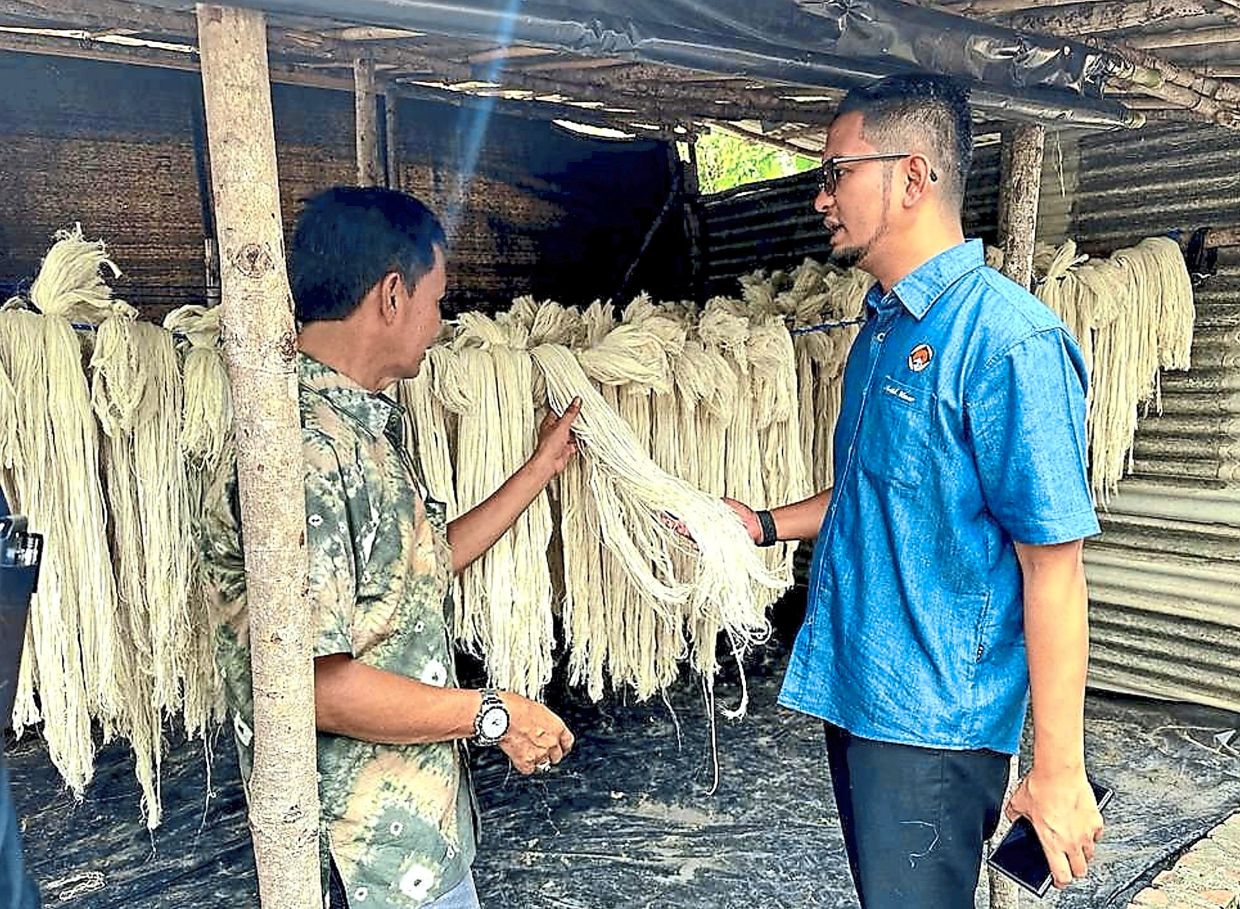Indonesian labourer Sahar working at a pineapple plantation in Kampung Parit Ghani near Simpang Renggam in Johor. — Photos: THOMAS YONG/The Star
THE growing demand globally for Malaysian pineapples spells good news for more than 3,300 farmers nationwide.
Malaysian Pineapple Industry Board (MPIB) chairman Sheikh Umar Bagharib Ali said local pineapples had high export potential.
He said the board had set an export target of RM1bil by 2025 under the 12th Malaysia Plan (RMK12).
“However, we surpassed the target in 2021 as Malaysia’s pineapple export value including pineapple-based products was RM1.106bil,” he told StarMetro.
“In 2022, the country’s export value recorded an increase to RM1.148bil. This obviously shows that the country’s pineapple-based products are in demand abroad.”
Johor, Sarawak and Pahang had the largest pineapple plantations in the country, Sheikh Umar said, citing 2022’s data.
he said Johor was the main player with 11,398ha (amounting to 64.03% of pineapple grown nationwide) for pineapple farming, followed by Sarawak with 2,288.7ha (12.86%) and Pahang with 1,361.86ha (7.65%).
In 2022, the overall land area for growing pineapples in Malaysia was 17,803ha.
Sheikh Umar said besides the fruit, pineapple-based products exported were canned pineapples, pineapple juice, ornamental pineapples and pineapple-flavoured agro-based items.
He said Malaysia exported pineapples to 20 countries worldwide including Singapore, the United Arab Emirates, Egypt, China and Japan.
Globally, Malaysia ranked 24th among pineapple-producing countries and fifth within Asean countries, he added.
Sheikh Umar said pineapple growers were able to produce enough for local consumption.
“Local demand for fresh pineapples is high, driven by awareness of its nutritional value.
“The introduction of sweet and juicy pineapple variants such as MD2 and Selangor Sweet are among reasons the fruit is sought after.
“There have not been any problems meeting demand of local consumers but we are unable to meet foreign market demand for now,” he said.
“The demand in Malaysia is high, so a majority of pineapple growers only focus on the Malaysian market instead of going global.”
He said there were 16 types of pineapples registered with the Agriculture Department.
“We started with the Morris variety until the latest addition of Sarawak Gold 1 (SG1),” he said, adding that SG1 had great potential and could be a game changer in Malaysia’s pineapple industry.
Sheikh Umar said the low shrub SG1 variety could reach the height of 61cm when the fruits were ready for harvesting.
He highlighted that due to its size, the minimum plant density per acre for SG1 was around 22,000 plants compared to 15,000 to 17,000 per acre for existing pineapple varieties.
This means SG1 is able to increase planting capacity and yield by around 30% to 40% per acre, he said.
“SG1’s golden orange colour and sweet and juicy taste make it good for juicing.”
He said based on a trial project carried out in Miri, the SG1 variety was ready to be harvested in nine months.
Sheikh Umar said this proved that the turnover for SG1 was better than other variants.
In comparison, he said it took the MD2 variant 14 to 16 months while Morris needed 12 months before fruits could be gathered.
“SG1 can help speed up and increase farmers’ income as other variants need a longer time before the fruits are ready for harvesting.
“MPIB plans to bring SG1 to Peninsular Malaysia but intensive studies will have to be carried out.
“For example, SG1 pineapples are grown on sandy soil in Sarawak compared to peat soil and mineral soil here in the peninsula.
“MBIP will also need to explore SG1’s uses for downstream products.
“This is important to develop the SG1 pineapple value chain,” he said, adding that he was optimistic about its potential.
Sheikh Umar said income earned from pineapple farming was attractive, hence the growing interest.
He said Agriculture and Food Security Ministry and MPIB were keen for youths to be involved in the industry.
He also said a programme for youths, aged 18 to 40, had been planned to promote pineapple farming.
A one-off incentive of up to RM20,000 would be provided to those already involved in the industry, be it agro-based industry or agrotourism, he disclosed.
Sheikh Umar said the board was also working closely with state governments and several companies to encourage youth involvement.
“We introduced the ‘anchor company’ system, which promotes private companies to work with youths,” he said.
“For example, a company will prepare a crop plot and initial capital.
“The youths are required to cultivate the crops but marketing will be done by the company, which gives farmers a buy-back guarantee.”
Sheikh Umar said the pineapple industry had received the attention of industry players in Malaysia’s agrofood sector.
“The industry has seen many people from the B40 group getting involved in pineapple farming.
“This industry can help people earn a good and stable income.
“Under RMK11, MPIB set the target income of pineapple growers at RM5,000 but under RMK12, the target is to increase their income to RM8,000 a month,” he added.
Sheikh Umar said the pineapple plant was known to have 1,001 uses as it could be consumed fresh, used in cooking and for making by-products such as pineapple thread which was obtained from the leaves.
Pineapple thread, he said, could be used for making fabric for shirts, ties and even handbags.
“Pineapple leaves can also be processed into paper, which is used as portrait drawing paper and the pulp can be used, instead of sawdust, for growing mushrooms,” he said.
“Leftover pineapple can also function as silage food and pallets for livestock.
“In addition, the enzyme found in pineapple is used as an ingredient in the production of medicines such as cough medicine and lozenges as well as in the cosmetics industry where pineapple is used as a base for certain beauty products,” added Sheikh Umar.








